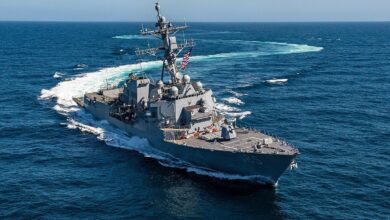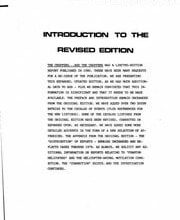Exploring the CIA’s Legacy Program: NURO, Skunk Works, and the Office of Global Access Explained

Inside the Secretive History of U.S. Underwater Reconnaissance: From U-2 Flights to Glomar Explorer
In the clandestine world of U.S. military operations, few stories are as intriguing as the evolution of underwater reconnaissance from the early days of the Cold War to the present. This journey, marked by top-secret projects and groundbreaking technology, has remained largely in the shadows until now.
One of the vital sources illuminating this history is Josh Dean’s book, The Taking of K-129, which provides compelling insights into the mysterious underwater missions of the U.S. government. Readers interested in further exploring this enigmatic history may also want to check out an excellent article by undersc0red on Medium titled, General Motors, Glomar Explorer, Lockheed Martin & UAP Connections.
The Beginning: U-2 Spy Plane and Its Legacy
The saga began in 1954 when Allen Dulles, then Director of the Central Intelligence Agency (CIA), signed an agreement with General Nathan Twining about the development of the U-2 spy plane. This initiative was aided by a small team led by Dulles’ special assistant, Richard Bissell, and Herbert Miller from the Office of Scientific Intelligence. Initially dubbed Project Staff, it transformed into the more structured Development Projects Staff (DPS) by 1958 and eventually the Office of Special Activities in 1962.
To maintain confidentiality, the DPS operated outside the usual agency framework, complete with its own security and communications.
The Evolution of Special Projects
Fast forward to 1963, when the Special Projects Staff was formed under the Directorate of Science & Technology, taking over satellite program responsibilities. By 1965, it was officially designated the Office of Special Projects. This office would play a critical role in undersea operations shortly thereafter.
In a pivotal moment for underwater reconnaissance, a new Special Projects Staff emerged on July 1, 1969, under the leadership of John Parangosky. This team would later oversee the ambitious Hughes Glomar Explorer project, tasked with recovering a sunken Soviet submarine as part of Project Azorian. Ernest Zellmer, a naval submarine officer, played a crucial role, managing the project’s day-to-day operations.
The National Underwater Reconnaissance Office and Further Developments
Formalized in August 1969, the National Underwater Reconnaissance Office (NURO) was created to manage underwater reconnaissance initiatives. This organization was led by Robert Frosch, an esteemed figure who would later serve as NASA’s fifth Administrator.
Through various classified operations and secretive funding structures, the NURO became the backbone for underwater intelligence gathering, including the infamous Glomar Explorer mission. Under the administration of then Director of Naval Intelligence, Admiral Bobby Ray Inman, the NURO explored advanced technologies for extracting crucial underwater data, marking a significant evolution in intelligence-gathering capabilities.
Continuing Secrecy and Intriguing Revelations
As the years progressed, the complexities of these classified projects only deepened. Notably, Jacques Vallee, a prominent figure in UFO studies, referenced conversations suggesting connections between UFO research and high-level projects at General Motors. The web of secrecy and inter-agency collaboration hints at a much broader operational intrigue that weaves together national defense, technological innovation, and perhaps even extraterrestrial phenomena.
The evolution of the Office of Special Projects, which later became the Office of Development & Engineering in 1973, saw the organization take on new roles beyond satellite systems to include comprehensive engineering and development support for the CIA.
Conclusion
The history of U.S. underwater reconnaissance showcases a complex interplay of secrecy, innovation, and strategic priorities from the Cold War to today. With the release of various documents and individual accounts, a clearer picture of these covert operations is beginning to emerge, inviting further inquiry into how these mysterious missions shaped and continue to influence national security efforts.
For those fascinated by this topic, detailed accounts and archival footage provide valuable perspectives on the legacy of underwater reconnaissance projects and their lasting impacts on modern intelligence operations.




